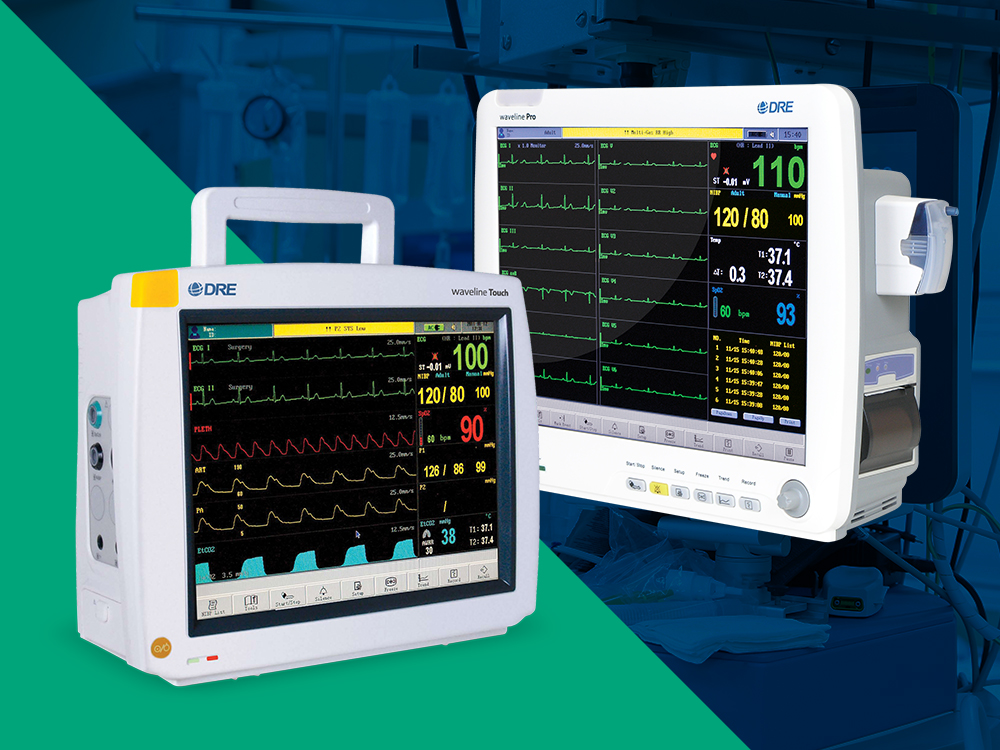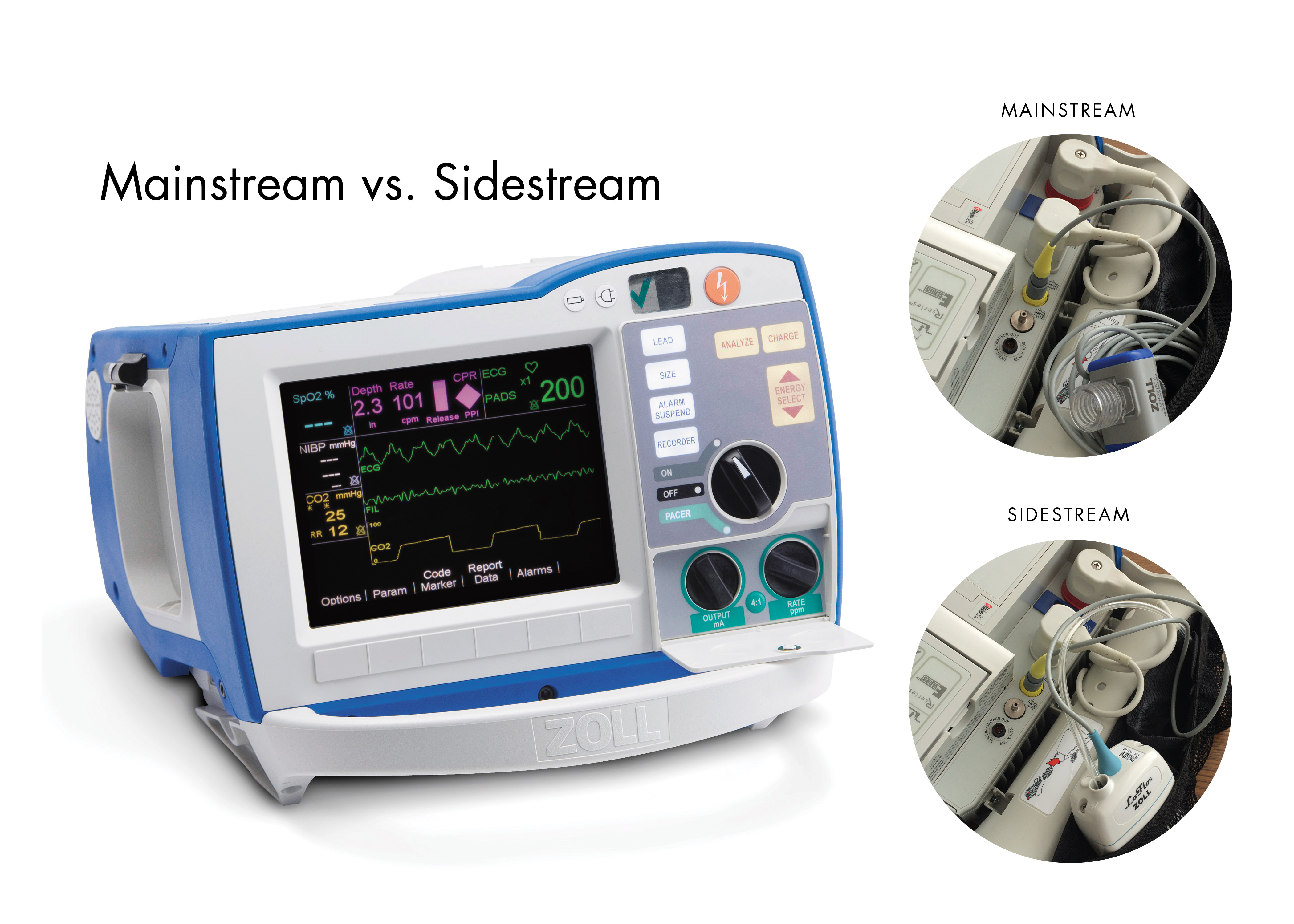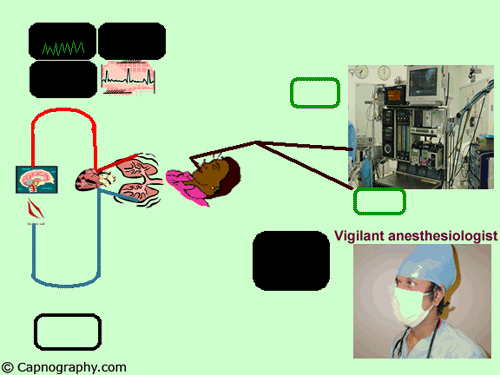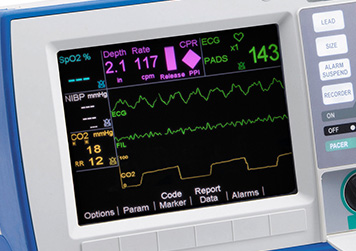end-tidal co2 monitoring standard of care
We believe that postoperative capnography should also be adopted in the postoperative environment for continuous monitoring of end-tidal CO 2 and earlier. ETCO2 emergency department monitoring and critical.

Capnography Vs Spo2 The Difference Could Be Life Changing
End-tidal carbon dioxide ETco 2 monitoring provides valuable information about CO 2 production and clearance ventilation.

. Identification of expired CO2 to verify correct positioning of an endotracheal. We assessed the impact of increased end-tidal carbon dioxide EtCO2 on the accuracy and trending ability of SpHb in laparoscopic surgery. Standard for every patient receiving general anesthesia.
To determine if end-tidal carbon dioxide etCO 2 value increased nurses perceptions of confidence in patients readiness for postanesthesia care unit PACU discharge. StatCO2 for patients over 15 kgs Mini StatCO2 for patients within 1 - 15 kgs and Neo-StatCO2 for patients within 025 kg - 6 kgs are designed to connect between an endotracheal tube and a breathing device. The CO 2 waveform or capnogram displays changes in the CO 2 concentration during the respiratory cycle.
78 Nitrogen 21 Oxygen 1 CO2 and other gases Exhaled gases. The 2010 House of Delegates of the American Society of Anesthesiologists ASA amended its Standards for Basic Anesthetic Monitoring to include mandatory exhaled end-tidal carbon dioxide E t CO 2 monitoring during both moderate and deep sedation to its existing requirement for endotracheal and laryngeal mask airway general anesthesiaIt became effective as of July. 1999 - Included capnography for mask anesthesia.
The effectiveness of out-of-hospital use of continuous end-tidal carbon dioxide monitoring on the rate of unrecognized misplaced intubation within a regional emergency medical services system. It is the standard of care during certain procedures such as intubations and sedations and can be used in variety of clinical situations. In this study the aim was to review the applications of end-tidal carbon dioxide ETCO2 monitoring in emergency department multiple databases were comprehensively searched with combination of following keywords.
ASA Standards of Care - Capnography in 1990s. End-tidal carbon dioxide ETCO 2 monitoring is the standard of care in the operating room for monitoring of ventilation and is the fastest known indicator for apnea respiratory depression and airway compromise. Pulse oximetry the standard of care in the ED prior to this study is known to have a 2- to 3-minute delay in detecting hypoxemia.
Comparison with arterial CO2 and with proximal mainstream end-tidal. Cheal tube placement with continuous end-tidal carbon dioxide monitoring is ideal. End-tidal CO2 ETCO2 monitoring is not a new modality in the pediatric emergency department PED and emergency department.
A novel method of distal end-tidal CO2 capnography in intubated infants. Continual monitoring for the presence of expired carbon dioxide. In some countries anesthetic agent monitoring is a written Standard of Care while in others it is not even mentioned.
Continual end-tidal carbon dioxide analysis in use from the time of endotracheal tubelaryngeal mask placement until extubationremoval or initiating transfer to a postoperative care location shall be performed using a quantitative method such as. Changes in the shape of the capnogram are diagnostic of disease conditions while changes in end-tidal CO2 EtCO2 the maximum CO2 concentration at the end of each tidal breath can be used to assess. Standard of care in the OR since.
A standard of care in the operating room for more than 25 years. Monitoring End Tidal CO 2 in Post Surgical Patients Continuous Breath Monitoring Increases Patient Safety. End tidal carbon dioxide monitoring is an important addition to oximetry.
Carbon dioxide measured at the airway can be displayed as a function of time CO 2 concentration over time. 3035 mmHg or the high CO2 group EtCO2. The patients exhalation gas is led through the indicator to detect approximate ranges of end tidal CO2 by color comparison.
EtCO2 is a measurement of the partial pressure of CO2 in gas expired at the end of exhalation when exhaled gas will most closely resemble the alveolar CO2 concentration. Total pressure of a gas is the sum of the partial pressures of the gas Expired CO2 measured PetCO2 mmHg in waveform Percentage Normal Levels PaO2 85-100mmHg PaCO2 35-45mmHg Percentage vs. 1 Most anesthesia care providers use an anesthetic agent monitor to measure agent concentrations in their everyday practice and in much of the world it has become a de facto Standard of Care.
2005 Godwin SA Caro DA Wolf SJ Jagoda AS Charles R Marett BE Moore J American College of Emer-gency Physicians. Also called capnometry or capnography this noninvasive technique provides a breath-by-breath analysis and a continuous recording of ventilatory status. The relationship of CO2 concentration to time is graphically represented by the CO2 waveform or capnogram.
Infrared technology is by far the most common and cost-effective method of carbon dioxide measurement and monitoring. Capnograph is an indispensable tool for monitoring metabolic and respiratory function. Prospective cross-sectional comparative one-group pre-post design.
Waveform capnography should be monitored in all intubated patients and displayed on the monitor as above. However ETCO2 may be underused in the PED setting. Participants n 64 were randomly allocated to the low carbon dioxide CO2 group EtCO2.
2 monitor that displays a number ie end-tidal CO 2 ETCO2. MmHg Relate to the air we breath. 2 Thus although widely adopted in patient care agent monitoring is.
The Respiratory Care Department will initiate and maintain non-invasive monitoring of end-tidal CO2 as ordered by the physician in the intensive care ED and step-down units. Pulse oximetry has become standard of care in many areas outside of the operating rooms. Ann Emerg Med 2005 Feb452177-96.
Reprinted with permission from Kugelman A Zeiger-Aginsky D Bader D Shoris I Riskin A. Procedural sedation and analgesia in the emergency department. The pulse CO-Oximetry allows continuous noninvasive monitoring of hemoglobin SpHb.
Nurses completed 2 assessments of confidence in readiness for discharge before and after etCO 2. 11172009 4 Measuring End Tidal CO2 Daltons Law. What is end-tidal CO2 etCO2.
UpToDate electronic clinical resource tool for physicians and patients that provides information on Adult Primary Care and Internal Medicine Allergy and Immunology Cardiovascular Medicine Emergency Medicine Endocrinology and Diabetes Family Medicine Gastroenterology and Hepatology Hematology Infectious Diseases Nephrology and. Pulse oximetry in 1989 followed by capnography. The nurses will initiate End Tidal CO2 monitoring via special nasal cannulas that are used with the pain pumps for narcotic administration.
Efforts have been made to decrease the response time and increase the accuracy of infrared technology to produce superior capnography waveforms even in premature babies with small tidal volumes and rapid respiratory rates3The carbon dioxide. A capnograph is a CO 2 monitor that displays a number and a waveform. B Bland Altman plot of the difference between Pa co 2 and proximal mainstream end-tidal carbon dioxide petco 2.
Understand how capnography or end tidal CO2 helps to monitor integrity of airway cardiac output and CO2 production during anesthesia ACLS sedation emergency medicine prehospital arena intensive care units trauma and assess functionality of breathing circuits and ventilators.

How To Use Capnography To Titrate Cpap Jems Ems Emergency Medical Services Training Paramedic Emt News

Standard Six Paremater Icu Monitor Ibp And Etco2 Optional Medical Equipment Medical Nicu

Monitoring Ventilation With Capnography Nejm

R Series End Tidal Carbon Dioxide Etco2 Zoll Medical




